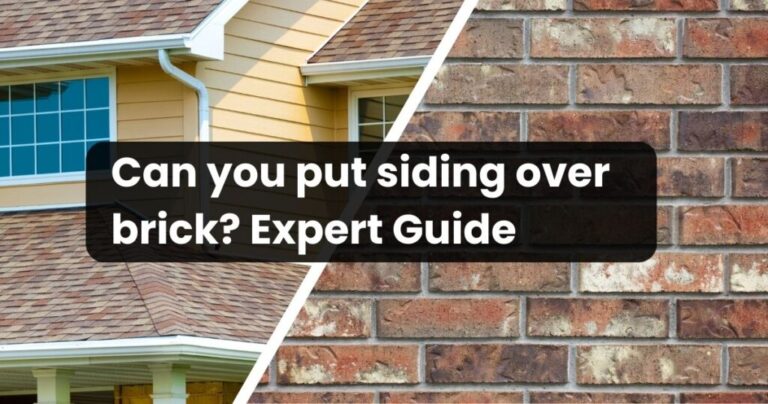Recently, I had the opportunity to work on a home renovation project where the homeowner wanted to update the exterior by installing siding over existing stucco. It was a fascinating project that taught me a lot, and I’m excited to share my insights with you.
In this post, I’ll walk you through the process, the challenges we faced, and the benefits of adding siding over stucco based on my personal experience. If you’re considering this for your own home, here’s what you need to know.
Why Install Siding Over Stucco?
In this particular project, the homeowners loved their house but felt the stucco had become worn and outdated. They didn’t want to go through the hassle and expense of removing the stucco entirely, which can be a time-consuming and costly process. So, installing siding over the stucco became a smart solution.
There are several reasons why this is a great option:
- Aesthetic Upgrade: The homeowners wanted a more modern look with clean lines, and siding was the perfect way to achieve that. Vinyl siding gave us the flexibility to pick the exact color they envisioned.
- Added Insulation: Stucco has decent insulation properties, but by adding siding, we were able to provide an extra layer of protection, which is particularly important for energy efficiency.
- Cost Savings: By avoiding the removal of the stucco, we were able to save the homeowners a significant amount of money on demolition and disposal costs.
The Installation Process – From Start to Finish
The first thing we did was inspect the condition of the existing stucco. Luckily, the stucco was mostly in good shape, but there were a few minor cracks that we repaired before moving forward. It’s crucial to fix any damage before adding siding to prevent issues like moisture infiltration down the road.
Here’s a step-by-step breakdown of how the installation went:
- Prep Work: After repairing the cracks, we cleaned the stucco surface. This is a step you can’t skip because any dirt or debris could affect how well the siding attaches.
- Adding Furring Strips: Furring strips were installed to create a flat, even surface for the siding. This not only made installation easier but also helped with air circulation, preventing any moisture from getting trapped between the stucco and the siding.
- Moisture Barrier: A critical step was installing a moisture barrier. This layer helps protect against water damage, which is especially important for homes in areas with heavy rainfall.
- Siding Installation: Finally, we installed the siding over the furring strips. We used fiber cement siding, which is durable, low maintenance, and can withstand the elements. The homeowners loved the final result—it gave their home a fresh, modern look, and the added insulation will help reduce their energy bills.
Challenges We Faced
While the project went smoothly overall, there were a couple of challenges that are worth mentioning. First, adding siding over stucco does increase the weight on the exterior walls. We had to ensure that the home’s structure could support the extra load, which was especially important because we used fiber cement siding, a heavier material.
Another challenge was making sure the moisture barrier was installed perfectly. Any mistake here could lead to moisture getting trapped, causing mold or rot. So, we took extra time to ensure this step was done right.
The Results:
Once the project was finished, the homeowners couldn’t believe the transformation. Not only did the siding completely change the appearance of the house, but it also added a layer of protection and insulation that will keep their home more comfortable throughout the year.
One of the biggest takeaways from this project was how much impact siding can have on a home’s appearance and performance. It’s a cost-effective solution that gives you the best of both worlds: a fresh, modern exterior and improved energy efficiency.
My Advice If You’re Considering Siding Over Stucco
If you’re thinking about installing siding over your stucco, here are a few tips from someone who’s just completed this type of project:
- Work with a Professional: While it’s tempting to try to DIY this, siding over stucco requires a skilled hand. There are nuances to the installation process that, if done wrong, could lead to future problems like moisture damage.
- Choose the Right Material: Not all siding is created equal. We chose fiber cement for its durability, but vinyl is another great option if you’re looking for something more budget-friendly.
- Inspect Your Stucco First: Make sure your stucco is in good condition before covering it. If there are significant cracks or structural issues, it’s best to repair those before adding siding.
Also read Can you put siding over brick?
Trust the Professionals
At Isaias Quality Construction, we’ve seen firsthand how installing siding over stucco is a great option for giving your home a fresh, modern look without the hassle of stucco removal. The homeowners in our recent project were thrilled with the results, and I’m confident you will be too, as long as it’s done right.
By taking the correct steps and working with experienced professionals like us, you can transform your home’s exterior while adding value and improving energy efficiency. If you’re on the fence, I’d say go for it—you won’t regret the decision!
Ready to Start Your Next Project?
At Isaias Quality Construction, we bring your vision to life with top-notch craftsmanship and attention to detail. Whether it’s a renovation, a new build, or a custom project, we’re here to help. Take the first step towards transforming your space today!

